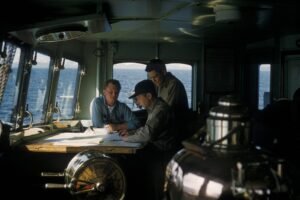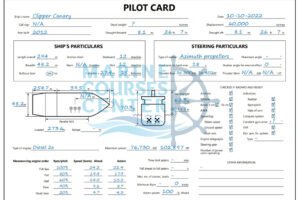
The Importance of Lifeboat Markings Ensuring Safety and Compliance at Sea

Table of Contents
The Importance of Lifeboat Markings Ensuring Safety and Compliance at Sea
Lifeboats are an essential component of any seafaring vessel, serving as a critical means of evacuation in the event of an emergency. However, their effectiveness is contingent on a number of factors, including proper maintenance, training, and equipment. Another key factor that is often overlooked is the importance of lifeboat markings, which play a critical role in ensuring the safety of passengers and crew members.
In this article, we’ll take a closer look at the significance of lifeboat markings, including the number of persons permitted to carry, the name of the ship, and the port of registry. We’ll also explore the implications of non-compliance, and how you can ensure that your vessel is in full compliance with all relevant regulations.
The Number of Persons Permitted to Carry
One of the most important aspects of lifeboat markings is the number of persons permitted to carry. This information is typically displayed prominently on the lifeboat itself, and it is essential that it be accurate and up-to-date. Overloading a lifeboat can have disastrous consequences, and can potentially lead to capsizing or other types of failure.
In order to ensure that your lifeboat is properly marked with the correct number of persons permitted to carry, it is important to consult all relevant regulations and guidelines. Additionally, it is important to conduct regular inspections and maintenance to ensure that your lifeboat remains in good working order.
The Name of the Ship
Another important aspect of lifeboat markings is the inclusion of the name of the ship. This information serves a number of purposes, including facilitating identification and ensuring that the lifeboat is properly assigned to the correct vessel. In addition, the name of the ship can also serve as a useful reference point in the event of an emergency.
When marking your lifeboat with the name of the ship, it is important to use clear and legible lettering that is easy to read from a distance. Additionally, it is important to ensure that the name is securely affixed to the lifeboat, and that it remains in place even under challenging conditions.
The Port of Registry
Finally, lifeboat markings should also include the port of registry. This information serves as a means of identification, and can be useful in ensuring that the lifeboat is properly registered and in compliance with all relevant regulations. Additionally, the port of registry can also be used as a means of identifying the vessel in the event of an emergency.
When marking your lifeboat with the port of registry, it is important to consult all relevant regulations and guidelines to ensure that you are in full compliance. Additionally, it is important to use clear and legible lettering, and to ensure that the marking is securely affixed to the lifeboat.
Ensuring Compliance and Safety at Sea
In addition to the specific requirements for lifeboat markings, it is important to ensure that your vessel is in full compliance with all relevant regulations and guidelines. This includes regular inspections and maintenance, as well as ongoing training for crew members and passengers. By taking a proactive approach to safety, you can help to ensure that your vessel remains safe and compliant at all times.
Conclusion
Lifeboat markings play a critical role in ensuring the safety and compliance of seafaring vessels. From the number of persons permitted to carry, to the name of the ship and the port of registry, these markings provide essential information that can help to prevent accidents and facilitate emergency response. By staying informed and taking a proactive approach to safety, you can help to ensure that your vessel remains in full compliance with all relevant regulations, and that your passengers and crew members remain safe and secure while at sea.
Leave A Reply
You must be logged in to post a comment.




6 Comments